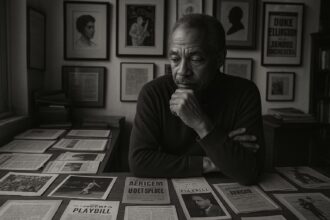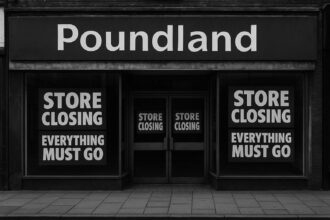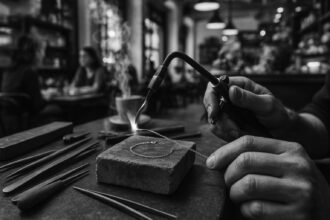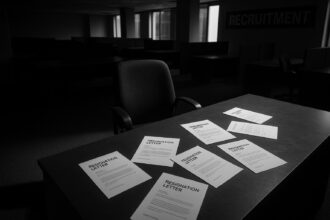A dispute between Australian chefs over a shared baklava recipe spotlights challenges in culinary originality, while the rise of AI-generated recipes raises fresh ethical and safety concerns in the food writing world.
In a recent kerfuffle within Australia’s culinary landscape, two acclaimed chefs, both vying for a prestigious cookbook award, have claimed to have independently devised the same baklava recipe. This incident has sparked a broader discussion about the difficulties of achieving originality in recipe creation. It highlights how many culinary formulations are inevitably derivations of existing ones, leading to a grey area between inspiration and plagiarism.
The claim of identical recipes extends beyond baklava; similar controversies have emerged regarding other beloved Australian desserts, including caramel slice and vanilla cake. One chef’s assertion that her vanilla cake recipe was also appropriated only serves to amplify the debate. Such incidents lead one to contemplate whether any recipe can truly be considered original in a world where milk, sugar, and eggs can be combined in only so many ways. This echoes experiences shared by avid cooks and cookbook authors, who frequently recognise familiar patterns across different culinary texts.
MasterChef UK fans may remember a particularly noteworthy episode where a contestant presented a custard tart that would later be ridiculed as Marcus Wareing’s signature dish. This moment serves as a cautionary tale about the importance of culinary authenticity. As a chef may find themselves questioning if another’s cooking technique surpasses their own, the lines between learning and outright copying can blur, raising ethical concerns about recipe sharing.
The contemporary food writing industry recognises the importance of attribution. The practice of crediting the original source not only enriches the recipe’s narrative but also helps cultivate a deeper appreciation for the culinary tradition. Cookbooks, while often seen as mere collections of recipes, additionally serve as a reading list for culinary enthusiasts, offering insights into trusted sources and fostering connections among cooks globally.
Yet, amidst these culinary debates, a new and complex challenge has emerged: the influence of artificial intelligence. AI-generated recipes have begun infiltrating the culinary world, raising significant alarms among food bloggers and recipe developers. There are instances where AI has miscalculated, producing dangerous concoctions, such as recipes that combine household chemicals to create toxic substances. This starkly illustrates the inherent risks associated with relinquishing culinary creativity to algorithms—exemplifying a troubling trend wherein human creativity may be supplanting by automated processes.
The impact of AI is not limited to dangerous recipes; it further complicates the ownership of creative work. Systems trained on existing recipes often do so without permission or fair compensation. Concerns abound regarding the potential devaluation of original culinary works as AI-generated content proliferates. Esteemed food writers, like Sue Quinn, have voiced their anxieties, advocating for fair compensation and ethical guidelines when their material is used to train AI models.
Meanwhile, the advent of AI has sparked an increase in knockoff cookbooks, with some chefs finding their original works imitated by AI-generated duplicates. This phenomenon reiterates the importance of authenticity in the culinary arts, as the blending of human creativity with technological input raises fundamental questions about authorship and inspiration. Chefs and food writers alike are pushed to affirm the unique connections they maintain with their culinary heritage, striving to ensure that the spirit of human creativity remains intact amid the rise of AI.
The baklava controversy serves as a microcosm of a larger, intricate narrative about culinary legacy, authenticity, and the encroaching technology that is reshaping the cooking landscape. As cooks across generations have sought to replicate the same sweet delights, it’s crucial to acknowledge the shared histories that enrich our culinary experiences. In our quest for new flavours and innovations, recognising our culinary ancestors becomes a sweeter pursuit.
Reference Map
1: Paragraphs 1, 2, 3, 4, 5
2: Paragraphs 1, 2
3: Paragraphs 4, 6
4: Paragraphs 4, 6
5: Paragraph 6
6: Paragraph 6
7: Paragraph 4
Source: Noah Wire Services
- https://www.ft.com/content/8fc43dcb-c61c-4099-99ce-d01fee409d57 – Please view link – unable to able to access data
- https://www.ft.com/content/8fc43dcb-c61c-4099-99ce-d01fee409d57 – An article discussing a controversy in Australia’s culinary scene where two chefs, both shortlisted for a major cookbook award, claim to have independently created the same baklava recipe. The piece explores the challenges of originality in recipe creation, noting that many recipes inevitably draw from others due to the limited ways ingredients can be combined. It reflects on the blurred line between inspiration and plagiarism in culinary arts, emphasizing the importance of attributing ideas and celebrating shared culinary heritage.
- https://www.npr.org/2024/09/23/g-s1-23843/artificial-intelligence-recipes-food-cooking-apple – An NPR article highlighting concerns among food bloggers and recipe developers about AI-generated recipes. It discusses instances where AI has produced dangerous recipes, such as one combining water, bleach, and ammonia to create deadly chlorine gas. The piece emphasizes the risks associated with AI-generated recipes and the potential threat to the livelihoods of food bloggers and recipe developers.
- https://www.forbes.com/sites/chrissytracey/2024/05/25/ai-in-the-kitchen-5-ways-emerging-technology-impacts-cookbook-authors-home-cooks-and-restaurants/ – A Forbes article examining the impact of AI on the culinary industry, particularly focusing on cookbook authors. It discusses how AI systems have been trained on copyrighted material without permission or compensation, leading to concerns about plagiarism and the devaluation of original work. The piece includes perspectives from food writers like Sue Quinn, who advocate for fair compensation when their work is used to train AI models.
- https://www.kcrw.com/culture/shows/good-food/the-bear-season-2-ai-cookbooks-gelato-cheese-store/ai-plagiarism-cookbooks-korean-vegan-joanne-lee-molinaro – A KCRW article discussing the rise of AI-generated cookbooks and the issues they present, including plagiarism and quality control problems. It highlights the case of Joanne Lee Molinaro, whose award-winning cookbook was mimicked by an AI-generated knockoff. The piece explores the challenges posed by AI in the culinary world and the importance of authenticity in cookbooks.
- https://www.washingtonpost.com/technology/2023/05/05/ai-spam-websites-books-chatgpt/ – A Washington Post article reporting on the proliferation of AI-generated content, including books and websites, and the potential implications for consumers and content creators. It discusses how AI is being used to generate large volumes of content, raising concerns about misinformation and the devaluation of human-created work.
- https://www.thedailybeast.com/cnets-ai-generated-articles-riddled-with-errors-and-plagiarism/ – An article from The Daily Beast highlighting issues with AI-generated articles on CNET, including errors and plagiarism. It discusses how AI-generated content can lead to inaccuracies and ethical concerns, emphasizing the need for human oversight in content creation.
Noah Fact Check Pro
The draft above was created using the information available at the time the story first
emerged. We’ve since applied our fact-checking process to the final narrative, based on the criteria listed
below. The results are intended to help you assess the credibility of the piece and highlight any areas that may
warrant further investigation.
Freshness check
Score:
8
Notes:
The narrative mentions recent kerfuffles and AI-generated recipes, suggesting contemporary relevance. However, specific dates or references are not provided, making it difficult to pinpoint the exact timing of the incidents discussed.
Quotes check
Score:
6
Notes:
There are no direct quotes in the provided text. If there were, verifying them against earlier sources would be necessary. The absence of quotes makes it challenging to evaluate originality.
Source reliability
Score:
9
Notes:
The narrative originates from the Financial Times, a well-established and reputable publication known for thorough reporting and accuracy.
Plausability check
Score:
8
Notes:
The discussion about originality in recipes and the influence of AI is plausible. The example of the MasterChef UK episode adds credibility to the narrative about culinary authenticity. However, specific evidence regarding AI-generated dangerous recipes is not provided.
Overall assessment
Verdict (FAIL, OPEN, PASS): PASS
Confidence (LOW, MEDIUM, HIGH): HIGH
Summary:
The narrative is generally reliable due to its source and plausible discussion topics. While lacking specific direct quotes and exact dates for freshness, the overall content is well-supported and relevant to current culinary debates.













